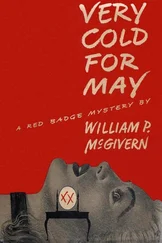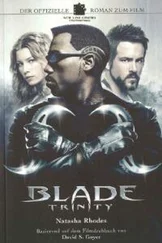Halupalai glanced around his bunker world, the one place, along with the tight compartment of his B-52, that he felt at home. Free. Unfettered. Alone.
He watched Kazakhs, his rear end swaying left and right with the descending adversaries. Above the pilot, Halupalai’s eyes drew themselves to the sign that demanded: “Are You EWO Ready?”
Hell yes, Halupalai told himself, he was EWO ready. On his nuclear uniformed upper arm, just below the mailed fist clutching lightning bolts, he wore another patch that showed he had flown 163 missions in Vietnam. He was the only one here who had dropped a real bomb, the only one who had seen a real SAM missile. EWO ready? Hell, yes, he was Emergency War Order ready. His eyes flicked past the sign to a row of clocks on which the hands edged past ten p.m. local time, past 0600 Zulu.
• 0605 Zulu
Beneath Omaha, across the fruited plain from Cheyenne Mountain, SIOP and RSIOP hummed quietly in their clean-room niche around the comer and below the Command Balcony. The two huge computers were engaged in their usual mortal combat, deadly deities calculating the megadeaths they had imposed on each other, calculating the megadeaths they had absorbed, strategizing moves and countermoves in the great chess game they had played now for decades. SIOP, an acronym for Single Integrated Operating Plan, always won. SIOP was America, containing all the nation’s nuclear capabilities on the silicon chips that ran the modern world. Each bomber was a data bit, as was each submarine and each intercontinental missile and each warhead mat could be spewed out of each weapon. Cities were data bits, as were earth satellites. Armies were data bits, as were civilians. Even SIOP was a data bit, as was the President of the United States. RSIOP represented America’s evaluation of Russia’s system, with its own world broken down into bits. SIOP and RSIOP were practicing now, testing each other. But SIOP never lost a practice. Since 1958, when the United States Congress amended an appropriations bill at the height of the early cold war, it had been against the law to use federal funds to study nuclear surrender. That made it difficult for SIOP to lose, not knowing how to give up.
Over the decades SIOP and RSIOP had engaged in every conceivable kind of nuclear war. At the moment, SIOP was trying a game of chicken—moving nuclear detonations (nudets, they are called in the world beneath Omaha) methodically across Siberia toward Moscow. In this dance of the nudets, SIOP had moved past Ulan-Ude, and Moscow had not yet responded.
Omaha, the home of the Strategic Air Command, clearly has better computers than Cheyenne Mountain, the home of the North American Aerospace Defense Command. Omaha, after all, is the nerve center of the offense; Cheyenne merely the first outpost of the defense. Offense prevails in the world of Omaha and Cheyenne. In most other ways, however, the buried bunker at Omaha is not nearly as imposing as the city inside Cheyenne.
Unlike the bastion at Cheyenne, the Omaha facility is buried under just twenty-two feet of soil and concrete rather than four thousand feet of mountain granite. Rather than skiers frolicking overhead, the men of Omaha are covered by a broad green lawn manicured to funereal perfection. Instead of a long dank tunnel ending in a twenty-five-ton vaulted door, the Omaha entrance is through swinging office doors.
Inside the entrance, secretaries type methodically in small offices and men cluster around water coolers much as they would at Prudential Life. The first sign that this isn’t an insurance company is the Strategic Air Command motto at the end of the entrance hallway: “Peace… Is Our Profession.” The next is a rugged bust of General Curtis LeMay, the father of SAC, a man who believed that air power could win any war, a man who, in the sixties, said America should bomb Vietnam back into the Stone Age. When America didn’t listen, he gave up his military career and ran for Vice-President on the George Wallace ticket. But most notable is the red telephone, encased in glass like a prized butterfly on a pedestal just inside the door. A small bronze plaque notes that this is the original red phone, donated by the Bell Telephone System in appreciation of its historical significance. The real phone, the line to the President, is downstairs. It is yellow. It also is dirty, as if the janitorial service dusts everywhere but there.
Downstairs, the atmosphere changes abruptly. A sign to the entrance of the bunker says simply: “No Lone Zone.” That means no one can proceed alone, not even a general, not even the general. The guards wear ice-blue berets, pearl-handled pistols, automatic weapons, and stern countenances.
Beyond them is the Command Balcony, beneath which SIOP and RSIOP hum contentedly and an eleven-man staff watches a bank of other computers with screens not unlike those at Cheyenne. They can communicate with almost anyone, a radar watcher far north on Hudson’s Bay or the pilot of the always-flying Looking Glass plane which would take command after the first missile struck Omaha. In addition to their small screens, the men of Omaha have six large screens, sixteen feet by sixteen feet each, at eye level with the Command Balcony. On those screens computer projections are easily viewed by all, especially the commanding general of the Strategic Air Command.
The general, his four stars glowing fluorescently tonight, swiveled left and right in his overstuffed leather chair on the balcony. The general had just turned a pale, luminous blue, so luminous that his body radiated a ghostly metallic halo. The color washed his craggy face down to a sallow, featureless mask. Red lights, like tracer bullets laid against the powder blue of a battlefield at dusk, raced across his forehead.
He cradled the phone, one of several he had at his reach, including the grungy one which he had not touched. Having listened patiently to his colleague at Cheyenne, he now felt the pumping adrenaline ripple through his body. This didn’t happen often enough, the phone flashing urgently, setting his underground empire on the combat footing that called for dim blue lights and red siren flashes calling everyone to attention. He liked it. He had his four stars. He was months from retirement. Taking political flak for computer malfunctions at Cheyenne didn’t bother him.
This, not the decades of watching and waiting, was what it was all about. Of the scores of times that Cheyenne had set this in motion, only five had reached the stage where the exchange seemed imminent. Even during those five episodes the general did not quite reach the point where he had picked up the dirty yellow phone to the President. But he had felt the rest of the thrills, his anticipation far outrunning his apprehension. He had scrambled fighters, placed the nation he was sworn to protect on a war footing. He had felt what a marine must feel on a beach landing, and he had liked it. The general had missed the Second World War. His career had been full of political wars, nonwars, cold wars. The blue lights meant the real thing, and he liked it.
His fingers jabbed at the controls that would bring what he called the big picture up on all six screens in front of him.
In front of him the main screen fluttered briefly in a televideo snowstorm and then came into focus.
WELCOME REP. BILLY JOE HARKINS OF ARKANSAS HOUSE APPROPRIATIONS COMMITTEE TO COMMAND BALCONY SAC HEADQUARTERS
Jee-zuz, the general muttered to himself. Visiting congressmen were the bane of all their existences. Billy Joe Harkins, here yesterday to play Dr. Strangelove war and sit in the general’s chair, had been even dumber than most. Would you take time to pray? the Bible Belt congressman had asked the general. Jee-zuz.
Читать дальше












